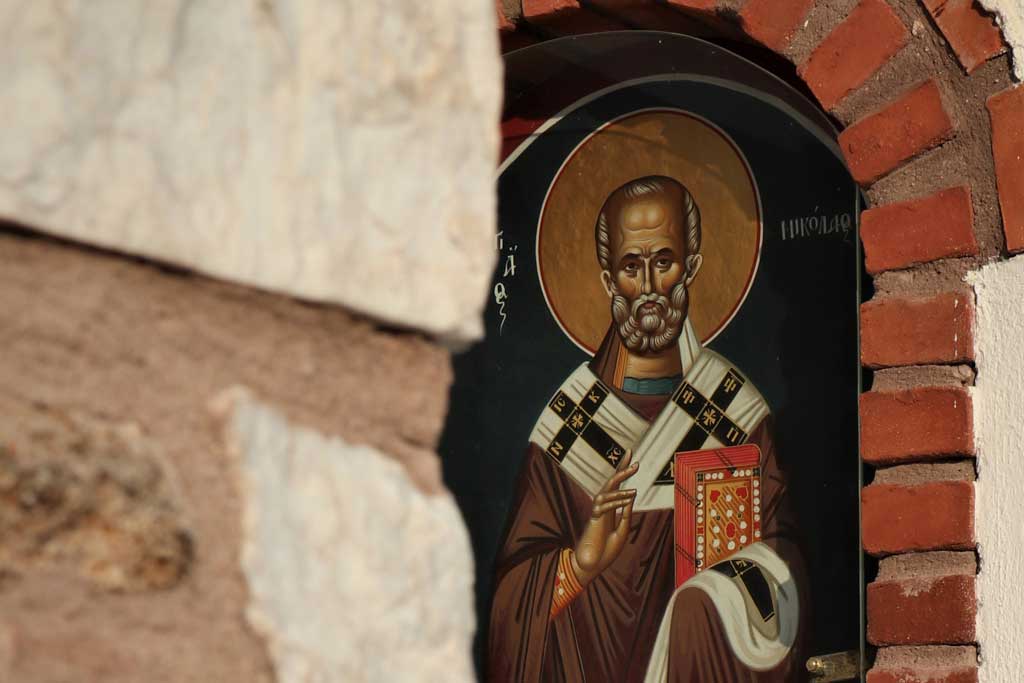This Christmas Season, illumy takes a deeper look at the figure of Santa Claus, with his iconic red suit, white beard, and jolly demeanor. Old St Nick is a beloved symbol of Christmas around the world. However, the origins of Santa Claus are rooted in a rich tapestry of historical, cultural, and religious influences that span centuries. This essay aims to explore the fascinating history of Santa Claus, tracing his evolution from ancient myths to the modern-day embodiment of holiday cheer.
Ancient Roots: The Predecessors of Santa Claus
The roots of Santa Claus can be traced back to various ancient myths and folklore dating back to the Middle Ages. One of the earliest influences comes from the Norse god Odin, who was associated with Yule, a winter solstice festival. Odin, depicted as a bearded figure with magical powers, would ride a flying, eight-legged horse named Sleipnir to deliver gifts to children during the Yule season.
In ancient Roman times, the festival of Saturnalia celebrated the god Saturn and included gift-giving and feasting. The tradition of exchanging gifts during the winter solstice carried over into other cultures and laid the foundation for the later development of Santa Claus.
What’s in a name?
The name “Santa Claus” has evolved over time and has its roots in various linguistic and cultural influences. The most direct origin can be traced back to the Dutch settlers in the New World during the 17th century. The Dutch had a celebration called “Sinterklaas,” which is a contraction of the Dutch words “Sint Nikolaas” or Saint Nicholas.
St. Nicholas: The Christian Patron Saint
The transformation of Santa Claus gained momentum with the inclusion of St. Nicholas, a Christian saint known for his acts of kindness and generosity. St. Nicholas (aka Saint Nick) was born in the 3rd century in Patara, a city in what is now Turkey. He became the Bishop of Myra and was revered for his benevolence towards the poor and his dedication to helping children.
One famous story involves St. Nicholas secretly providing dowries to three impoverished sisters. One night he tossed a bag of gold through a high window, saving them from a life of destitution. This act of charity became the basis for the tradition of hanging stockings by the fireplace, anticipating gifts from St. Nicholas.
St Nicholas Day, observed on December 6th, became a day for gift-giving and celebration in many European countries. The popularity of St. Nicholas as a gift-giver continued to grow, and his legacy merged with other traditions as it spread throughout Europe.
The Evolution in Europe: Sinterklaas, Father Christmas, and Kris Kringle
In the Netherlands, the Dutch celebrated the feast of Sinterklaas on the night of December 5th. Sinterklaas was depicted as a tall, thin figure dressed in a red bishop’s robe, similar to the attire of St. Nicholas. This celebration involved the arrival of Sinterklaas by boat, accompanied by his helpers, known by the Dutch name “Zwarte Pieten” or Black Peter. This controversial figure has been the subject of much debate in modern times due to associations with blackface. Attempts have been made to modernize his appearance, and change public perception. The Dutch brought the Sinterklaas tradition to the New World when they settled in America, particularly in New Amsterdam (present-day New York City). His appearance became known in North America the early 19th century.
In England, the character of Father Christmas emerged as a personification of the Christmas spirit. Father Christmas was often depicted as a cheerful, bearded man embodying the joy and merriment of the holiday season. While he wasn’t initially associated with gift-giving, the merging of traditions would later incorporate this aspect.
The German immigrants to America brought with them the tradition of “Kris Kringle,” another name for Santa Claus. The term “Kris Kringle” is derived from the German “Christkindl,” meaning Christ Child. Over time, Kris Kringle became synonymous with the spirit of Christmas gift-giving, and the Christmas tree.
Colonial America: The Birth of Santa Claus
The blending of various cultural and religious traditions continued in colonial America, where different influences converged to shape the American version of Santa Claus. The Dutch Sinterklaas, the English Father Christmas, and the German Kris Kringle all contributed to the evolving image of Santa Claus.
In 1773, a New York newspaper published the first image of Santa Claus, depicting him as a man dressed in a long robe, similar to the Dutch Sinterklaas. The accompanying poem referred to him as “Santa Claus,” a phonetic anglicization of the Dutch “Sinterklaas.”
In 1809, Washington Irving, a prominent American author, wrote a satire called “A History of New-York from the Beginning of the World to the End of the Dutch Dynasty.” In this work, he portrayed Santa Claus as a jolly, pipe-smoking Dutchman who rode in a wagon. Although Irving’s depiction was intended as humor, it played a role in popularizing the image of Santa Claus in America. Shortly following this publication, John Pintard, an American merchant and philanthropist proposed St. Nicholas as the patron saint of New York City.
The Influence of Clement Clarke Moore and Thomas Nast
The modern image of Santa Claus received significant contributions from two influential figures in the 19th century: Clement Clarke Moore and Thomas Nast.
In 1823, Moore penned the famous poem “A Visit from St. Nicholas,” more commonly known as “The Night Before Christmas.” This poem solidified many aspects of the modern Santa Claus legend, including his rotund figure, the eight reindeer, and the practice of delivering gifts through the chimney. Moore’s poem, with its vivid imagery and joyful portrayal of Santa Claus as a jolly old elf, captured the imagination of the American public and further shaped the evolving character.
Thomas Nast, a political cartoonist, made lasting contributions to the visual representation of Santa Claus. In a series of illustrations for Harper’s Weekly from the 1860s to the 1880s, Nast depicted Santa Claus as a plump, bearded, and jolly figure dressed in a red suit lined with white fur. Nast’s illustrations also introduced other enduring elements, such as the North Pole workshop, the naughty and nice list, and the depiction of Santa checking his list twice.
The Coca-Cola Connection
The association between Santa Claus and Coca-Cola is a well-known aspect of his modern image. Previous depictions of Santa in print can be attributed to Norman Rockwell, establishing the jolly man, and his iconic look. In the 1930s, the Coca-Cola Company sought to create a heartwarming and festive marketing campaign for the holiday season in the United States. They commissioned artist Haddon Sundblom to create a series of illustrations featuring Santa Claus enjoying Coca-Cola.
Sundblom’s illustrations, which ran as advertisements from 1931 to 1964, portrayed Santa Claus as a plump, happy figure with rosy cheeks and a white beard. These images solidified the red-and-white color scheme that is now synonymous with Santa Claus, as Coca-Cola’s branding prominently featured these colors.
While Coca-Cola did not invent the modern image of Santa Claus, their marketing campaign undoubtedly played a role in popularizing and standardizing certain visual elements. The campaign further entrenched the idea of Santa as a jovial, gift-bearing character with a penchant for Coca-Cola on Christmas Eve.
Actors who played Santa Claus
Over the years, several actors have portrayed Santa Claus in various films, television shows, and stage productions. The role of Santa is often depicted in a lighthearted and whimsical manner, making it a favorite for actors during the holiday season. While there isn’t a definitive ranking for the “top” actors who played Santa Claus, here are some notable performers who have donned the red suit and brought the jolly character to life:
- Edmund Gwenn: Perhaps one of the most iconic portrayals of Santa Claus was by Edmund Gwenn in the 1947 film “Miracle on 34th Street.” Gwenn’s performance earned him an Academy Award for Best Supporting Actor, and he remains a beloved embodiment of the character.
- Tim Allen: In the film “The Santa Clause” (1994) and its sequels, Tim Allen played Scott Calvin, a man who accidentally causes Santa’s fall and must take over the role. Allen’s comedic take on the character made the film a holiday favorite.
- Richard Attenborough: Richard Attenborough played Kris Kringle, the department store Santa in the 1994 remake of “Miracle on 34th Street.” While Gwenn’s portrayal in the original is often considered the definitive one, Attenborough brought his charm to the role in the modern version.
- David Huddleston: David Huddleston played Santa Claus in the 1985 film “Santa Claus: The Movie.” The film explores the origin story of Santa and his adventures. Huddleston’s warm and fatherly portrayal is remembered fondly by those who grew up watching the film.
- Billy Bob Thornton: In a more unconventional and darker take on Santa, Billy Bob Thornton played Willie T. Stokes, a foul-mouthed, alcoholic safe cracker who poses as Santa in the film “Bad Santa” (2003) and its sequel. This antihero version of Santa brought a different kind of humor to the holiday season.
- Paul Giamatti: In the film “Fred Claus” (2007), Paul Giamatti played Santa Claus, portraying a more relatable and human side of the character. The film explores the relationship between Santa and his estranged brother, Fred Claus.
- Tom Hanks: While not playing Santa in a traditional sense, Tom Hanks voiced the iconic train conductor who takes children to the North Pole in the animated film “The Polar Express” (2004). The character has become a symbol of the magic of Christmas for many.
- Jim Broadbent: In the film “Arthur Christmas” (2011), Jim Broadbent voiced Santa Claus. The film provides a contemporary and humorous take on the Santa Claus mythology, depicting Santa as part of a high-tech operation.
These actors, among others, have contributed to the diverse portrayals of Santa Claus on screen. Each interpretation brings its own unique charm and character to the timeless figure, ensuring that Santa Claus remains a beloved and versatile part of holiday entertainment.
Globalization and Cultural Adaptations
As the world became more interconnected through globalization, the image and traditions of Santa Claus spread to various cultures and countries. However, different regions adapted the character to fit their own cultural contexts.
In some countries, Santa Claus coexists with traditional gift-giving figures. For example, in Italy, La Befana, a kind old witch, is believed to deliver gifts to children on Epiphany Eve. In Russia, Ded Moroz (Grandfather Frost) and his granddaughter Snegurochka (Snow Maiden) fulfill the role of gift-bringers during the New Year celebration.
In Japan, Christmas is not traditionally a major holiday, but Santa Claus has been embraced as a symbol of festive cheer. However, the Japanese have also introduced their own twist with Hoteiosho, a plump, bearded figure who brings gifts to children.
The history of Santa Claus is a fascinating journey through time, blending religious traditions, folklore, and cultural influences. From the generous acts of Saint Nicholas to the Dutch celebration of Sinterklaas, the Americanization of Santa in literature and illustrations, and the iconic imagery solidified by Coca-Cola, Santa Claus has evolved into a global symbol of joy and gift-giving.
While the modern image of Santa Claus may be a product of marketing and cultural amalgamation, the underlying spirit of generosity and kindness associated with the figure remains a powerful and enduring aspect of the holiday season. As Santa continues to bring joy to children and adults alike, his evolution serves as a testament to the dynamic nature of cultural traditions and their ability to transcend time and borders.
Photo by Liviu Florescu on Unsplash


